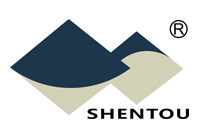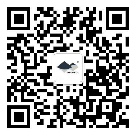CHINA AUTOMOTIVE SUPPLIER QUALITY MANAGEMENT BRIEFING
11/06/2019
Vol. 3, No. 11, November 2019

① QUALITY CHALLENGES & SOLUTIONS WITH YOUR SUPPLIERS IN CHINA
How to verify the validity and conformity of measuring instruments when inspecting suppliers (II)
The definition of and relation between Internal and outsourced calibration
 Internal calibration refers to in-house calibrations laboratory performs on the measurement equipment used for inspection or calibration on their own based on specified methods and requirements.
Internal calibration refers to in-house calibrations laboratory performs on the measurement equipment used for inspection or calibration on their own based on specified methods and requirements.
Outsourced calibration refers to sending measurement tools, equipment and instruments to be calibrated to a qualified third-party laboratory for calibration and verification.
The testing piece for in-house calibration must meet the following requirements: the standard parts have to be certified by a CNAS lab, gloves must be used when using these parts and the parts should be wiped clean and daubed with aviation gasoline after use.
The in-house calibration is built on the outsourced calibration. If there is no outsourced calibration, there will be no calibration standard parts. The purpose of both internal and outsourced calibrations is to obtain the accuracy and reliability of the measurement data so that the perfection of product quality could be guaranteed.
Qualification of the calibration personnel
Factories usually choose in-house calibration for the length measuring instrument and gauges and outsourced calibration for the others. For factories with relatively large scale, they will usually have their internal calibration technicians receive outsourced training and take up their posts only after they pass the exams and become certified.
The factories will typically choose those CNAs qualified institutions or metrological verification agencies set up by the national metrological authorities for the training and certification. The qualification certificates of their calibration technicians will be proactively presented by these factories during the audit.
For some small factories, however, they would carry out in-house calibrations by their own staff who have no official qualification, for either costs saving or failing to understand that the calibration staff must be properly trained and certified first. The results of such calibrations are invalid and not acceptable.
By Felix SS YUAN
② CRITICAL FAILURE MODES / QUALITY CONTROL POINTS IN FOCUS
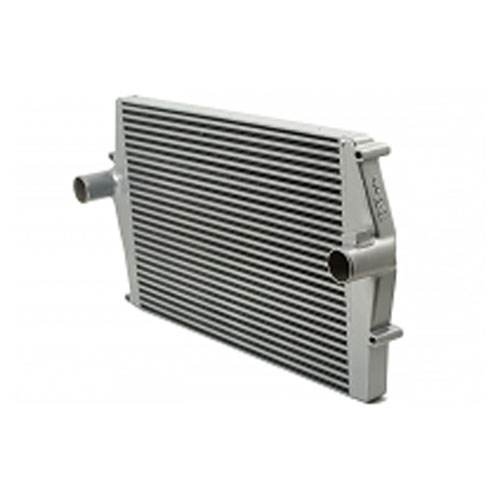
Intercooler
Intercooler will normally be seen in the vehicles with turbocharger installed. Intercooler is actually part of the turbocharger, which is designed to lower the high temperature after turbocharging, so as to reduce the engine heat load, increase the intake volume, and consequently increase the efficient of the engine. Intercooler is an essential component of the turbocharging system for turbocharged engines. Whether it’s a supercharged engine or a turbocharged engine, intercooler should be installed between turbocharger and the intake manifold.
Intercooler is typically made of aluminum alloy material which can be classified as:undefined
A. Air-cooled and water-cooled according to the cooling medium;
B. Nozzle type or fin type based on the internal structure.
Primary failure modes:
Leakage
The main causes of product leakage:
Poor casting of air chamber, faulty welding, welding quality, deformation of main board, etc.
Finished product inspection items:
Air tightness, main dimensions, appearance and packaging.
By QP LIU
③ KEY CONCEPTS & PRACTICES IN SUPPLIER QUALITY MANAGEMENT
Control Plan
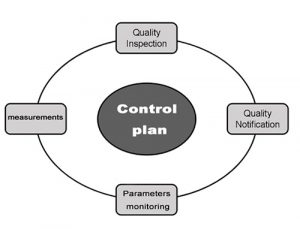 The Control Plan is a document that describes the actions (measurements, inspections, quality checks or monitoring of process parameters) required at each phase of a process to assure the process outputs will conform to pre-determined requirements. It provides the operator or inspector with the information required to properly control the process and produce quality parts or assemblies. Control plans are consistently maintained to reflect real time updates.
The Control Plan is a document that describes the actions (measurements, inspections, quality checks or monitoring of process parameters) required at each phase of a process to assure the process outputs will conform to pre-determined requirements. It provides the operator or inspector with the information required to properly control the process and produce quality parts or assemblies. Control plans are consistently maintained to reflect real time updates.
Control Plans are currently being utilized in the Automotive, Aerospace, Agricultural Equipment, Heavy Equipment and many other industries throughout the world. For the automotive sector, there are three types of Control Plans:
● Prototype – for component that is in the early phase of development
● Pre-launch – after the prototype phase is complete but before full production
● Production – when a component is in full production
While the use of a Control Plan is always required in the manufacturing process for OE applications, its use in the aftermarket manufacturing varies. We strongly suggest the aftermarket manufacturer develop and comply with at least a “generalize” Control Plan, i.e. a control plan fit for an entire product category.
④ CHINA INDUSTRY & MARKET UPDATE
Cost of raw materials:
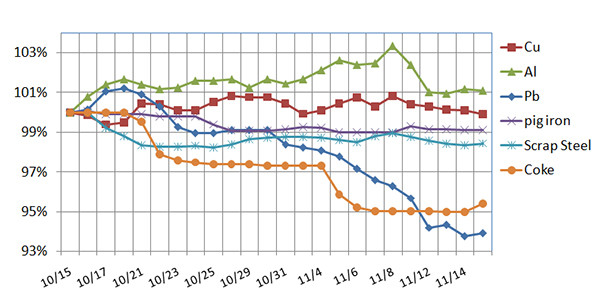
Exchange rates:
![]() USD/RMB: 1:7.0466
USD/RMB: 1:7.0466
![]() EUR/RMB: 1:7.8043
EUR/RMB: 1:7.8043
![]() RUB/RMB: 1:0.1097
RUB/RMB: 1:0.1097
November 2019
The above information is for reference only
⑤ IT HELPS TO KNOW...
Notable industry events in the next 3 months
No | Name | City | Date | |
1 | Automechanika Shanghai | Shanghai | 2019/12/3-6 | |
2 | Automitive Aftermarket Industry and Tuning (Spring) Trade Fair | AAITF | Shenzhen | 2020/2/21-23 |
Shentou as usual will exhibit at the Automechanika Shanghai 2019 and our booth numbers is 3E43. We look forward to meeting you there!
SHENTOU SUPPLY CHAIN MANAGEMENT CO. LTD. is a Shenzhen, China, based company serving international automotive clients in the implementation of their China strategies and programs. CHINA AUTOMOTIVE SUPPLIER QUALITY MANAGEMENT BRIEFING is a bi-monthly newsletter published by Shentou to address the specific and unique quality challenges and concerns international automotive companies face with suppliers in China. Comments are welcome at qms@shentou.com. Click here to subscribe.
